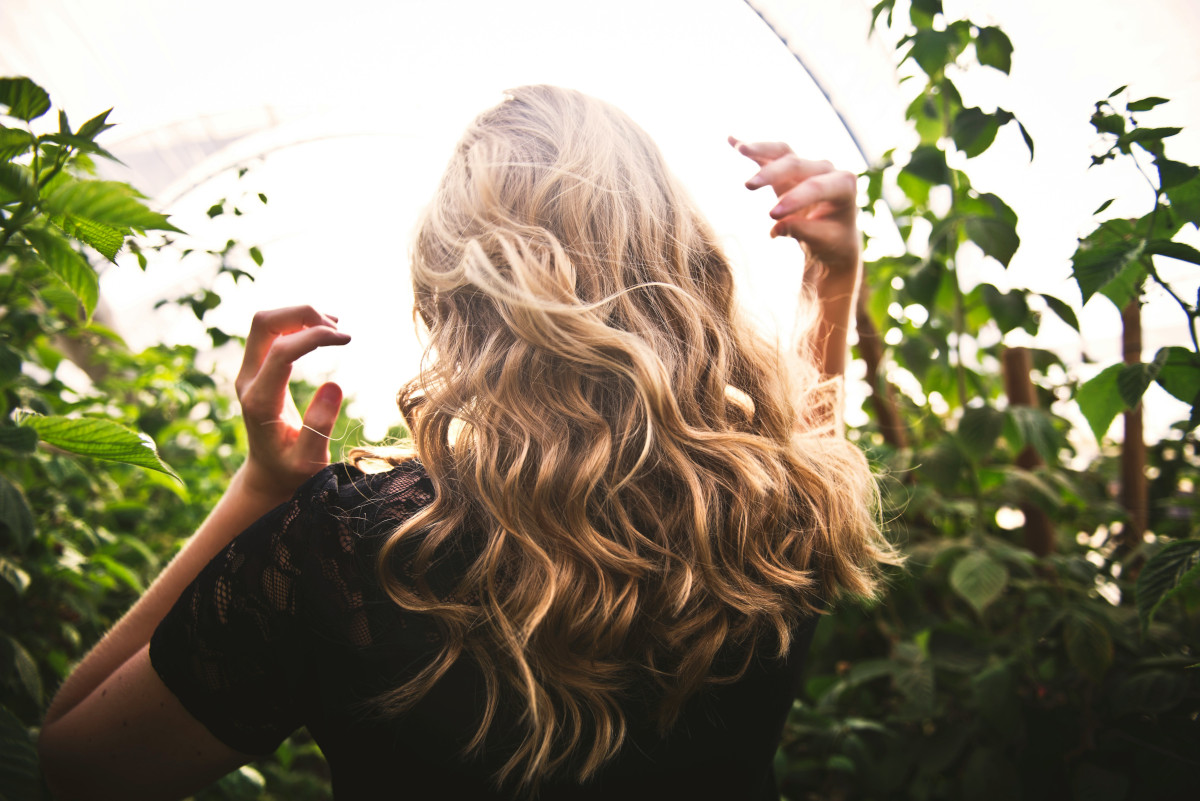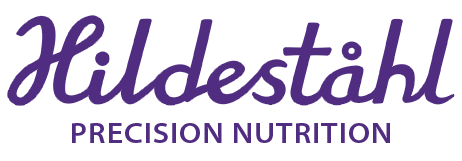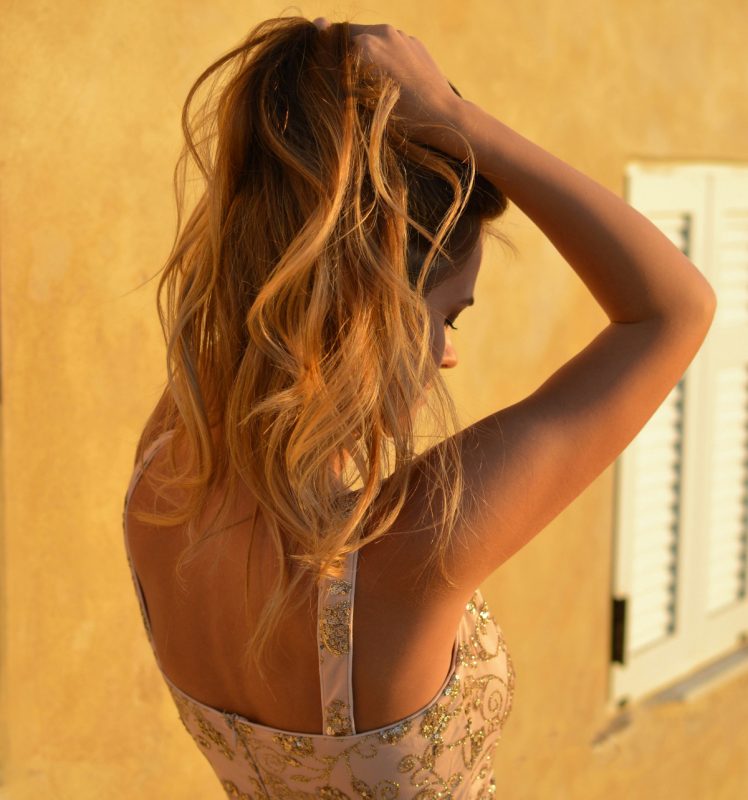No products in the cart.
Scalp problems – why we need to rethink hair care
Article by guest writer Frida Olsson.
Let’s be honest – how often do you actually think about your scalp? Not very often, I guess, unless you have a problem with it. It’s usually only when you have a problem with something that you really notice it. You don’t realize you’re breathing every day until you get a cough or lose your breath. That was the case for me with my scalp.
I never thought about how my scalp was doing – I was too busy trying out different hair colors and tufting huge volume that I pinned in place with three liters of hairspray every day. Then the dry shampoo came along and revolutionized my mistreatment, and finally my scalp said “thanks, but no thanks”. What had previously been a slightly dry scalp with dandruff turned into painful eczema.
So began my journey from being a product junkie to today using minimal products, and those I do use are both natural and kind.
Hair care – the the solution that causes the problem?
We need to start by talking about that mountain of products we are encouraged to buy for our hair. You shouldn’t just have a shampoo and conditioner to get your hair clean, but they should be specifically designed for dry, colored or damaged hair. Or they should give you extra volume, shine or more defined curls. The products promise to give you the hair of your dreams – shiny, full and moisturized. But still you experience problems. Your hair needs to be washed every day to keep the dream alive, your scalp starts to protest, and your ends start to fray anyway. What do you do? You pile on more products: dry shampoo to avoid washing your hair every day because you’ve heard that’s bad, maybe hair masks to care for your poor scalp, oils designed to protect and repair your ends. But the truth is that many of these “solutions” do more harm than good.
They are often full of sulphates, silicones, parabens and synthetic fragrances – ingredients that can cause irritation, hormone disruption and, in the worst cases, contribute to more serious health problems. And here’s the tragedy: your scalp and hair didn’t actually ask for this ‘help’. In many cases, it’s these products that create the problems in the first place.
When short-term solutions created long-term problems
I wish I could say there was a magic recipe that solved everything for me, but the truth is that scalp problems are often both complex and individual. When I realized that my eczema and dry, flaky scalp were the result of years of excessive use of hair products and styling, it still wasn’t easy to make a change. To stop prioritizing the surface and start taking care of the foundation was a journey – a frustrating, slow, but also very educational journey.
I was born with typical Scandinavian hair: thin, fine, straight and rat-eared. When, at the age of 13, I first dared to dye my hair, I was instantly addicted. Such a difference it made. I no longer had to settle for my “boring” hair. That led to many years of all the colors of the rainbow, experimenting with hair extensions, curling and flattening my hair, tufting for extreme volume (for a while I was very inspired by Bill Kaulitz in Tokio Hotel – for those of you who know… You know), hairspray, texture powders, waxes, oils, masks and so on.
After a few years, I started to notice that my scalp was getting dry and flaky but it was nothing that a little scalp serum couldn’t solve. It made my scalp feel a lot calmer but it made my hair greasy even faster. Not long after I started wishing for a solution to that problem, the revolutionary dry shampoo hit the market. Hallelujah!
As you can imagine, I slowly but surely built up a whole shelf in the bathroom, but every product solution I added caused a new problem that needed a new solution. My hair and scalp just got worse.
From unaware consumer to conscious change
Somewhere along the way, I realized that there are thousands of different ingredients that can go under “fragrance” in the table of contents of products and do not need to be specified. This is partly because fragrance blends are protected as trade secrets to prevent competitors from copying unique formulations. This means that any product with ‘fragrance’ in the list of ingredients could have an unknown number of chemical ingredients that could be harmful to us in the long run, and we consumers are left in the dark about the content of what we use on our skin – our largest organ that absorbs much of what we come into contact with.
This realization made me start replacing some products with gentle and fragrance-free alternatives, but I was still some time away from a complete rethink. I continued the abuse but tried to repair the damage with “kinder” solutions. Soon my scalp became painfully irritated, and I developed eczema that was not only itchy, but also sore and tender. Although I knew somewhere that this was due to the way I treated my hair and scalp, I did not dare to break my habits.
I don’t know why it’s so hard to break bad habits, even when you know they’re hurting you. Maybe it’s because we want to keep up a facade? For me, it felt like a betrayal of my own identity to stop using hair products that gave me volume, texture and that “perfect” look. It was when I delved into the rest of the ingredients in the ingredients list beyond “perfume” that I realized I had to make a change.
A hair care journey full of lessons and pitfalls
The change was not easy. Leaving behind products I had been using for years and switching to more natural alternatives or no product at all felt like learning to ride a bike all over again. I stopped bleaching my hair, dropped all styling products and tried everything from the ‘no poo’ method to washing my hair with just water.
In researching more natural ways to wash my hair, I was told that if you wean your hair from being washed every other day to being washed every few weeks, your scalp’s sebum production will be restored and your hair won’t get greasy as quickly. The problem was getting to the restored stage when my hair became greasy almost instantly, and seeing yourself looking like a wet cat is not exactly a confidence booster.
So I fell back into continuing with the dry shampoo. I used it to hide my oily hair and give my hair a “rest” between washes, with the hope that it would help me get to that restored stage where, naturally, I could go two weeks without washing my hair and it would still look fresh. The problem was that the dry shampoo kept drying out my scalp, causing it to continue to overcompensate by producing even more sebum. The result? Nothing but more reliance on dry shampoo. It was not sustainable. I couldn’t eliminate all products with harmful chemicals just to continue depending on dry shampoo, which also contains equally harmful ingredients.
I continued to struggle with exploring natural alternatives. I tried powder mixtures with Shikakai, Amla and Reetha. I tried to get my hair used to being washed with water alone again, but this time I used a hog hair brush, which I had read was absolutely essential for the method to work. And while all of this was interesting and educational, it was also hard to stay motivated. Sometimes I would fall back into old habits, only to start again.

Finding a balance
After much experimentation, I’ve finally found a routine that works for me right now. It’s simple, natural and above all sustainable for me, my scalp and our planet:
Shampoo cake: I wash my hair with an organic, homemade shampoo cake about every two weeks. The is pH-balancing and cleans without irritating my scalp.
Homemade dry shampoo: When my hair needs a little freshening up, I use a dry shampoo with just a few natural ingredients. I’m frugal with it and always brush it out thoroughly with a hog hair brush.
Water and oil: Between washes, I rinse my hair with just water about every three or four days to avoid dry shampoo residues on the scalp. För att ge lite extra kärlek till mina toppar använder jag a few drop of organic argan oil once or twice a week. Once a week I boost my hair growth with a mixture of water and a few drops of organic rosemary essential oil that I spray in my hair the night before I rinse/wash my hair.
Sshampoo brush: Every time I wet my hair, I gently massage my scalp with a shampoo brush to stimulate the scalp, remove dead skin cells and distribute the natural oils in my hair.
For a while I was blinded by the idea that I needed to live completely without products, but I have realized that products have their place, as long as they actually do good for us and do not give a false image of well-being, nor do they harm us or our hair in the long run.
The outside reflects the inside
The biggest breakthrough for me was the realization that hair and scalp health is not just about what you use on the outside. In recent years, I’ve realized how much stress, bad eating habits and negative thoughts were affecting my scalp. Although I now have a routine that works for me, I notice that eczema can flare up if I’m stressed or if I don’t take care of myself from the inside.
It may not be the most fun thing to hear, but the truth is that 80% of scalp health depends on how we treat the inside of our body and mind. The remaining 20% is about the products and routines. It can be a little hard to realize, but it’s also incredibly liberating. It means you don’t have to spend thousands of dollars on products or spend hours on a long routine with too many steps. All it takes is for you to start seeing your body as a temple and giving it the care it deserves.
A winding road with many insights
My journey with scalp problems has been far from straightforward. I’ve had setbacks, I’ve been frustrated, and I’ve doubted whether I would ever overcome my problems. But now, with a simple routine and a greater understanding of how it all fits together, I feel more balanced than ever.
And you know what the best part is? It’s not the perfection that’s the goal. It’s the journey to get there – learning to listen to your body, adapting and, above all, being kind to yourself.

